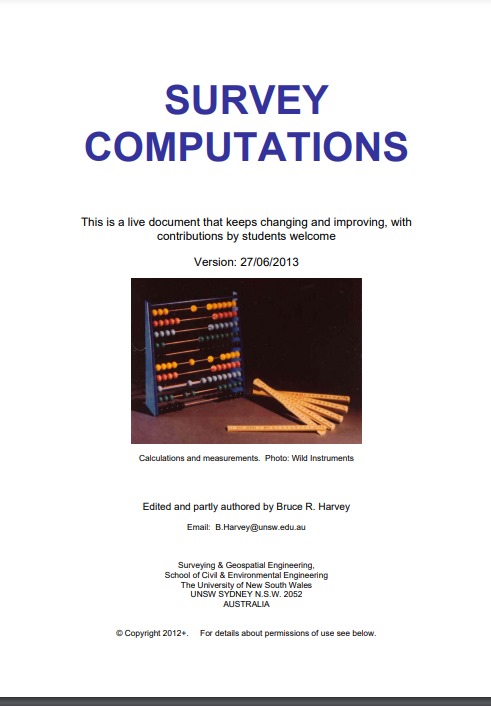
SURVEY COMPUTATIONS
IGet used to doing your hand or calculator calculations neatly and orderly, cross out any mistakes and continue. Don't do a quick, rough, messy job and then write up a neat copy of the calculations. Writing the calculations once leads to less chance of making mistakes because of untidy work, and there are no errors caused by mistakes when copying to a second version. As a general rule, the length of time taken over a computation is of little importance compared with the necessity for obtaining a correct answer.
As you know, rounding 134.234567 to two decimal places gives 123.23. Some people always round trailing 5s up to the next value so their values are always slightly too large. So if the part to be rounded-off exactly equals 5 then round to the nearest even value, e.g. again to two decimal places: 123.235 becomes 123.24 and 123.285 becomes 123.28. If you always round to an even number it can be 'cleanly' divided by 2 whereas odd numbers generate further decimal places and trailing fives. Rounding to the even value means that sometimes the new value will be slightly too large and sometimes slightly too small this helps to reduce the effect of round-off errors accumulating when a long series of calculations are involved. Beware of problems of rounding an already rounded number, e.g. 869.79749 when rounded to 4 places becomes 869.7975 if then rounded to 3 places becomes 869.798 but if you rounded to 3 places from the original number you would get the correct result = 869.797.
Survey calculations used to be done by using special tables of logarithms and trig functions. In some cases where only a few decimal places were required slide rules could be used to give approximate answers. Mechanical machines were also common in the past. Special computation methods were devised to make their use easier. You will see old survey text books in libraries which discuss computation methods specifically designed for these machines. This chapter will look at methods designed for efficient and reliable use of the current machines in use, i.e. calculators and computers.